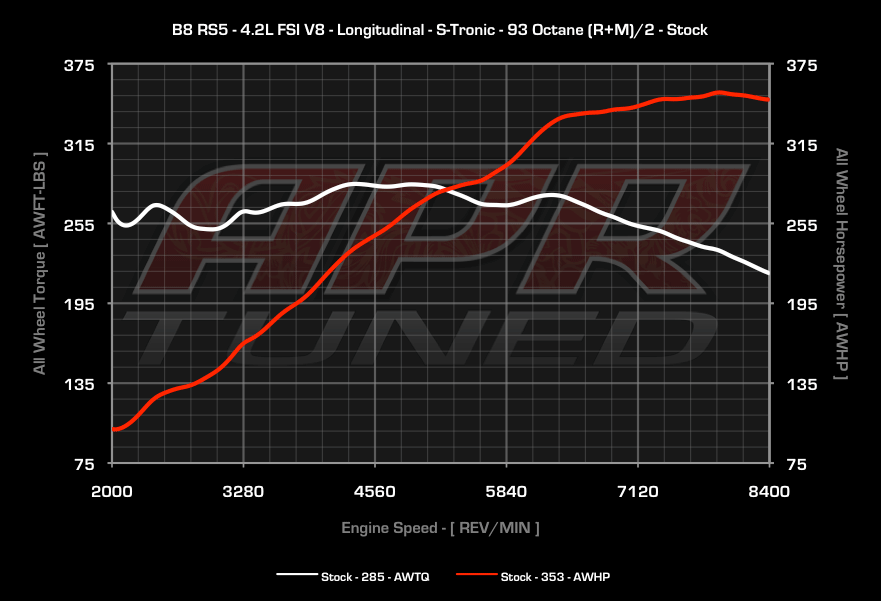I’ve blasted this all over the internet as it seems RS5 data is few and far between. I’m a data driven person, and I know many of you are, so I’d love getting my hands on more data. Anyways here’s what we gathered from our RS5, completely stock, a few days old. BTW, I’m not here to sell anything, just share data where I’d expect to see the most interested people.
Here’s my post from RS5 forums:
We strapped the vehicle down to our all wheel drive dynapack dynamometer to collect some data. The first two runs were lower than the last 4 which looks to be due to some adaptation that took place while the vehicle was getting fully up to temp in all areas. It was up about 5 FT-LBS on average, so I discarded the first two lower stock runs and averaged the results of the final 4 runs.
Here’s what we were putting down to all 4, averaged over several runs, which were very consistent:

Now, this is to the wheels, or hubs on our dyno, so there is drivetrain loss. Audi advertises numbers from the crank, which does not include this loss. Looking through the numbers I tried overlaying our graphs over Audi’s dumbed down smooth marketing graphs to see how they stacked up. I then added torque increasingly across the entire RPM range till the numbers lined up very closely with Audi’s numbers.
Audi claims the following:
450 hp @ 8250 RPM
317 lb-ft. @ 4000 RPM
By adding around 2-65 ft-lbs of torque across the RPM band from 2000 to 8400 RPMs, we get a crank graph that closely resembles Audi’s advertised figures:

Torque came out only slightly higher in some spots, but lower at the beginning of the dyno pulls which is not unheard of as every dyno type out there will read and load a little differently. At any rate this gets us very close to what they advertised so we’ll try using this drivetrain loss calculation when analyzing other upgrades we make. We’ll also reexamine the numbers after we get an RS5 on a few different dynos, including our MAHA crank calculating dyno in the APR UK facility.

 Us B8s are always a surprise at the strip compared to the 500+ hp crowd of unsuspecting stock C63s and CTS-Vs at the track.
Us B8s are always a surprise at the strip compared to the 500+ hp crowd of unsuspecting stock C63s and CTS-Vs at the track.